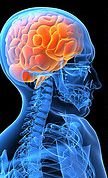A therapy that rides on radio and sound waves provides pain relief.
Sound relief
A therapy that rides on radio and sound waves provides pain relief.
They say that surgery should always be the last option. If there's a treatment out there that might offer you pain relief or even solve your physical problem, then by all means try that before you decide to go under the knife.
Given that premise, it would seem that Sonotron therapy is a viable option, especially
since it is non-invasive and drug-free. It combines pulsed radio and sound waves to
provide relief in certain arthritic and repetitive stress conditions.
Sonotron is touted to offer effective pain relief for complaints such as osteoarthritis, frozen shoulder, cervical spondylosis, stiff neck and tennis elbow, and sports injuries that affect muscles and that cause tissue swelling, among other conditions.
The device looks like a hair-dryer and works by means of a "corona discharge beam"
that's produced when a low radio frequency of 430 kHz, pulsed at a low sound frequency of 1 kHz, is applied to an electrode located in a hand-held applicator.
The corona dischargebeam from the applicator is then directed on the problem area above the skin. It emits electro-magnetic energy and electrons beneficial to the patient.
The external treatment has no contact with the skin at all and at most, the patient may
feel a little heat.
The device was invented by Dr Alfonso DiMino in the United States in 1987. He
developed the Sonotron technology in the late 1970s while working on an industrial
application involving specialised electronic circuits.
Dr DiMino found that the device produced heat from the discharge. As an arthritis
sufferer himself, Dr DiMino tried it and folmd that it prParlv reduced nain.
Healing therapy
Medical practitioner Dr Gertrude Kow, who' had a machine in her clinic since 2004, foun Sonotron therapy useful for patients who ha just had stitches, especially if they didn't want antibiotics.
"Sonotron seems to promote faster healin and it's helpful for abrasions and diabetic fo
as well. It also helps abscesses by making them ripen faster or regress. The faster you
the treatment, the better. If you've had a bad knee for 10 years, for example, you can't
expect miracles.
"Sonotron therapy also known to be useful for treating osteoarthritis, Carpal Tunnel Syndrome, tendinitis, sports injuries and other joint conditions."
There has been evidence of acceleral ed healing of wound in diabetics, burns, accident injuries and surgery with the the apy. While Sonotron therapy cannot remove degeneration at the cartilage of joints, it can reduce or eliminate further degeneration.
Interestingly, in his in-vitro experiments, Brian Thompson of the University of Cincinnati, Ohio, in the United States, found that he was able to repeatedly increase the
density of cartilage by applying Sonotron or his patients.
The energy emitted is equivalent to 1/60 the power of a typical electro-surgical unit in
widespread use today and the energy that is dissipated within the tissues is equivalent to
that of a pocket calculator, which means it is safe for use. In fact, the Radiation Protectior Unit of the Institute of Science and Forensic Medicine Department in Singapore has cert fied that no licences are required for the use of the device in the republic.
Sonotron works by converting free radica present in the cells of problem areas into
oxygen and water. This inner chemistry change promotes growth of tissues that results in the healinz of the oroblem area. scientists believe that free radicals excess is the cause of most clinical problems, hence the need to remove them from areas which are inflamed or injured.
An alternative
While it's a therapy that is difficult to prove since you do not obtain results straightaway, these days medical professionals in the United States, Japan, Singapore and Malaysia are more receptive to complementary medicine like Sonotron therapy to treat patients with chronic pain without having to deal with the side-effects of painkillers or drugs.
"You have to bear in mind that Sonotron doesn't work as fast. [tell patients that if after
three or four sessions, they don't feel any better then they should try something else. it's not like a pill which you can pop and get immediate effect. Most patients who are wiliing to try Sonotmn are those who have been through other treatments and even surgery," says Dr Kow.
Some patients with illnesses that were thought to be too difficult and time-consuming to treat have come away with positive results. Proven safe even for children, Sonotron therapy has also hastened the rehabilitation of stroke patients, while asthmatics and those with sinusitis see improvements in their condition.
Sonotron therapy was introduced to Malaysia in 1994 by Panmedic Sdn Bhd. It is now used by more than 100 general practitioners and spedalists around the country as well as in rehabilitation and sports medicine. it is also available at some private and govemment hospitals, and the Malaysian Sports institute in Kuala Lumpur has a Sonotron machine to treat sports injuries.
Respite from pain
SURE, there are some days when we just don't feel like getting up from bed. But it can he frightening when you literally cannot get up,
One day in 2006, retiree Salamiah Ishak. 57, found that every effort she made to get up from a nap on the floor hurt so bad that she was stricken by fear.
And when her husband Mohamad Yusof tried to pull her up, the pain reverberated to her spine and her arm felt like it was being ripped off.
"My whole body ached. When I finally managed to make my way to see a doctor in Sungai Petani, he couldn't find anything wrong and merely told me to lose weight," says Salamiah, who weighed 70kg at that time.
She sought treatment from various specialists but none gave her a definite answer. Then a neurologist finally found, after an MRI (magnetic resonance imaging), that she had a curvature in her spine and that a pinched nerve might be the cause of her pain.
"While that bit of news helped, it didn't solve the problem. Then I chanced upon a magazine that had a story on Sonotron. After the second therapy from a clinic in Petaling Jaya, the pain lessened considerably. For the past two years, I've had to sleep on a reclining chair as it's been almost impossible to get up from a horizontal position from the bed. When I recently went to Terengganu, I could sleep on the hotel bed and get up on my own," says Salamiah.
Her husband Mohamad Yusof, 58, who used to work with the Royal Malaysian Air force, was at first sceptical but was willing to try anything to help his wife's condition.
"It has worked for Salamiah and I've even tried it for my tennis elbow and an old knee injury.
"The real test came when I had to drive for eight hours to and from Terengganu. Before, I couldn't sit for long as my knee would hurt. This time, surprisingly, I handled the distance without any complaints," says Yusof.
"It has to do with your frame of mind and some might find it hard to accept this form of therapy.
"What's good is that there are no drugs involved and that's comforting especially since my wife has been on too much medication already."
A medical specialist (who declined to be named) says that drugs tend to have side effects when used over long periods. Painkillers may cause gastric and even renal failure in the long term.
"For one of my elderly female patients, I cut off all the medications and put her on Sonotrun therapy. Now, she can walk, and has left the old folks' home to stay with her family in her hometown," says the specialist who has had the Sonotron machine in his clinic for five years.
"I also treat elderly patients suffering osteoarthritis. One patient who was planning on having surgery for her back tried Sonotron as a last resort. After five times, she felt well enough to go back to work after being on no-pay leave for six months,"




